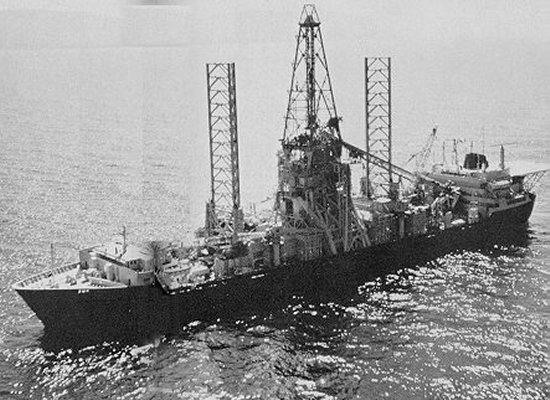Thursday, January 31, 2013
Nuclear Weapon Design
The details of the design, engineering, and manufacture of nuclear weapons is one of the most interesting applied physics stories of the 20th Century. You can learn more about that story here:
Nuclear weapon design
Of course, most of the real nuts-and-bolts knowledge of how to put together a nuclear bomb are jealously-guarded government secrets. This is as it should be. Still, there's a surprising amount of detail out there on the variety of nuclear explosives and how they work, and the high-level details open to the public are fascinating in that spectacular way that volcanic eruptions, hurricanes, and engineering disasters are fascinating. There are very few peaceful applications of this technology, so it's best to hope this knowledge hard-won in laboratories and on chalkboards over the decades stays mostly inert well into the future.
Wednesday, January 30, 2013
The Ideological Turing Test
Image credit
Let's say you're having an argument with someone on a subject you or your opponent thinks is important. What can you learn by putting yourself in your opponent's shoes? Blogger, statistician, and Catholic apologist Leah Libresco has this to say:
The results of both rounds of the ideological Turing test are here. In her talk, Libresco emphasizes that one of the signs of a good debater is that she sometimes loses the argument, and both parties are thereby brought closer to the truth. If your goal is insight rather than victory, the possible prizes are much greater, and, I think, the exercise is a lot more interesting.
Let's say you're having an argument with someone on a subject you or your opponent thinks is important. What can you learn by putting yourself in your opponent's shoes? Blogger, statistician, and Catholic apologist Leah Libresco has this to say:
The results of both rounds of the ideological Turing test are here. In her talk, Libresco emphasizes that one of the signs of a good debater is that she sometimes loses the argument, and both parties are thereby brought closer to the truth. If your goal is insight rather than victory, the possible prizes are much greater, and, I think, the exercise is a lot more interesting.
Tuesday, January 29, 2013
Atmospheric Entry
The transition from space flight to aerodynamic flight is a dynamic and challenging physics regime that people are just starting to figure out how to navigate. You can read more about it here:
Atmospheric entry
Aerospace is a pretty cool industry. My friend Nicole and I work
at the same company, only her work involves creating the devices that will keep
air conditioned, dry, full of oxygen, and free of carbon dioxide aboard the
CST-100 space vehicle. This is more exciting than my work, which mostly
involves figuring out how to move large awkward pieces of airplanes from one
test stand to another, and pulling on them until they break. For science.
That’s okay, though, because I get to live in Seattle and she has to work in
Houston.
Space travel is an inherently romantic endeavor, and
nothing in spaceflight quite captures the imagination like the parts of a spaceship that keep
her crew alive and cool during the return to Earth after a voyage beyond. Beyond our home planet, spacecraft have also made it down through the atmospheres of Venus, Mars, Jupiter, and Titan, and it's transformed these places into real worlds, not just abstractions in the minds of a few astronomers and dreamers. There's much work to be done in making flight through plasma-hot air routine, but it's nice to know that, as a civilization, we're on our way.
Monday, January 28, 2013
Project Azorian
Image credit
The United States' Central Intelligence Agency once partially recovered a sunken Soviet ballistic missile submarine from the Pacific Ocean floor. You can read more about it here:
Project Azorian
Even today, more than two decades since the fall of the Soviet Union, the government is terse when it comes to details on the CIA's activities. Compared to much of what the agency's done over its history, Project Azorian was a rather wholesome operation. The crew of the Glomar Explorer even took the trouble to give the recovered submariners' bodies a burial at sea, which remains the only piece of declassified footage on the program to this day:
Project Azorian wasn't completely successful. The target submarine, K-129, broke into two pieces during recovery, and none of the ballistic missiles were successfully captured. Despite that, and the dearth of information available on Azorian, it's reasonable to think that the torpedoes and cryptographic equipment obtained were a tremendous Cold War prize for the CIA and the west in general. The synchrony of events required for all this to work out: K-129's intact sinking, the Soviet Navy's failure to locate her, USS Halibut's successful find, the Hughes cover story, and the mostly-successful operation of the Glomar Explorer, is remarkable. Once the details are all known, Project Azorian is sure to be a canonical example of complex engineering operations in secret in a hostile environment.
The United States' Central Intelligence Agency once partially recovered a sunken Soviet ballistic missile submarine from the Pacific Ocean floor. You can read more about it here:
Project Azorian
Project Azorian wasn't completely successful. The target submarine, K-129, broke into two pieces during recovery, and none of the ballistic missiles were successfully captured. Despite that, and the dearth of information available on Azorian, it's reasonable to think that the torpedoes and cryptographic equipment obtained were a tremendous Cold War prize for the CIA and the west in general. The synchrony of events required for all this to work out: K-129's intact sinking, the Soviet Navy's failure to locate her, USS Halibut's successful find, the Hughes cover story, and the mostly-successful operation of the Glomar Explorer, is remarkable. Once the details are all known, Project Azorian is sure to be a canonical example of complex engineering operations in secret in a hostile environment.
Subscribe to:
Posts (Atom)



